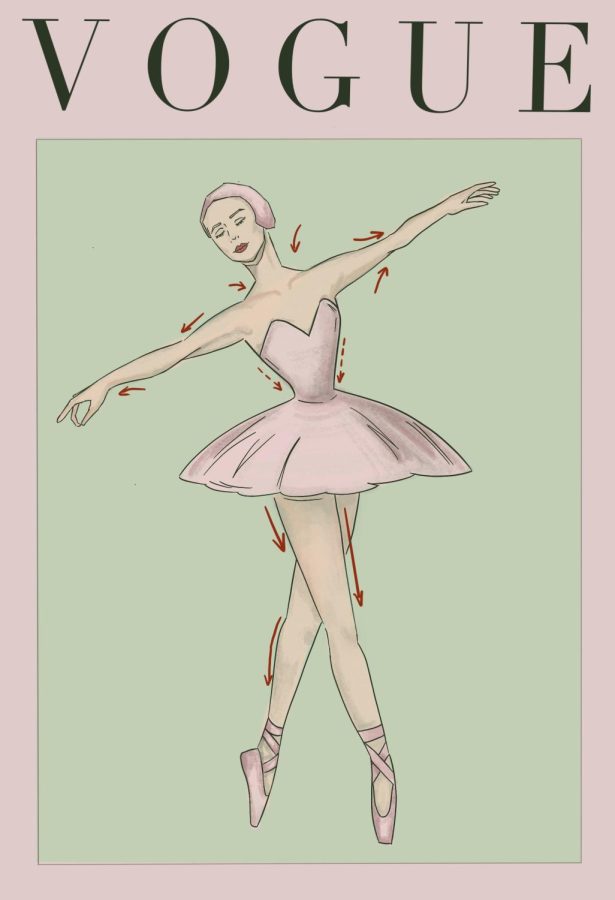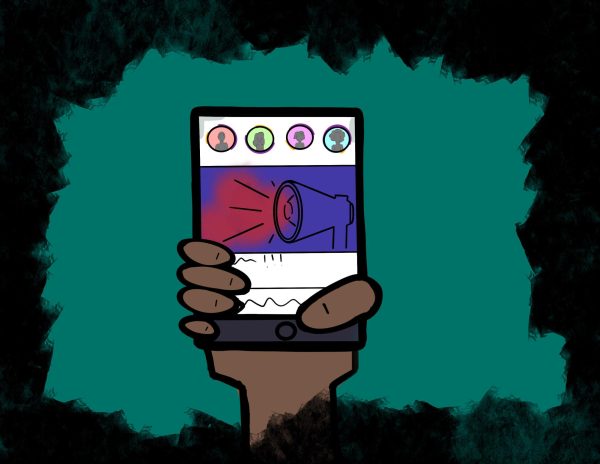Enduring Beauty Standards Tainted with Toxicity
Toxic standard of body image.
On Saturday mornings, I assist teaching in a pre-ballet class for the most elementary dancers at my ballet studio, with most of the students having barely started academic school. A couple months ago, as I was accompanying a group of these baby ballerinas to the bathroom, 1 of them pointed to a photograph of a ballet dancer hanging on the wall, asking if the pictured dancer was a “good ballerina.” I laughed at the innocence in her question, replying that she was a beautiful dancer because of her dedication, her graceful pose being a result of the time and effort that she put into her craft. The girl nodded in agreement, adding, “And she’s skinny.”
She is 6 years old.
Children should not comprehend what “skinny” means. They should not look at a ballerina, or a soccer player, or a politician, and immediately attribute their accomplishments to the size and shape of their figure. Moreover, they should not look at their own bodies with a judgemental lens, telling themselves what they can and cannot be based solely on their appearance, often before they’ve even learned how to read.
I cried that day, not just for that young dancer, but for the culture that allowed her to think those thoughts in the 1st place. At 1 point or another, that girl was told that ballerinas have to be thin. At 1 point or another, she was told what skinny means, what it looks like, and what it denotes in our societal culture of unattainable perfection. If she spoke those words — thought those ideas — at a mere 6 years old, how do those perceptions develop with time? When does simply recognizing bodily size morph into negativity, and when does that negativity become actionable hatred? When does the damage become irreversible?
I hate that girls and women are told over, and over, and over again that thin is beautiful, that thin is desirable, and that thin is right and anything else is utterly wrong.
I hate that by the time American girls reach age 17, studies report that 78% are “unhappy with their bodies,” as reported by Now.org.
I hate that we fail to protect even the most pure and innocent of people from this toxicity, that literal children can look in the mirror and label their bodies with the stinging harshness of “fat” or “skinny.” It’s wrong, and it’s disgusting, but it’s also reality.
I know that the little girl is not alone in her thinking. Even though I knelt down in front of her, looked into her bright eyes, and told her that a ballerina’s body has absolutely nothing to do with their talent or artistry, I know that those thoughts will inevitably cross her mind again. Bobbing her head up and down, messy hair adorned with a glittered ribbon, her enthusiastic nod was far from reassuring.
There are things that, once heard, cannot ever be forgotten. Repeatedly, society forces us to hear its message, perpetually shoving beauty ideals down our throats in place of the white bread and full-fat ice cream we’re told will destroy our chances of donning a chiseled beach body just in time for summer.
It’s truly impossible to tune out.
While social media is not entirely to blame, as this culture of unattainable beauty standards has persisted long before Instagram or TikTok’s debut, it often serves to reinforce the unhealthy expectations and connotations fostered in women. Even when media content is not outwardly hateful, the subliminal message remains the same.
If 2 women of different body types post in the exact same outfit, the responses they receive are often quite different. It doesn’t matter that their bikinis are identical, that their eyeliner matches to a tee, or that they are lip-syncing and dancing to the same pop single. All that the algorithm sees, and therefore the consumers see, is their bodies.
“Body goals.”
“I guess I’m not eating today.”
“Hot.”
While 1 is praised for their appearance, however revealing or unassuming their attire may be, the other’s comment section is filled with very different feedback.
“Inappropriate.”
“You’re so confident to post this.”
“There are children on this app.”
Regardless of size, we’re so often told that our bodies are distracting, inappropriate, and meant to be hidden so as to shield the world from their undesirability. The media sexualizes and criticizes women to no end, only to label them as prudes when they fail to display cleavage or flaunt in body con clothing.
Ultimately, shame is so wrongfully disguised as modesty.
I know that these issues are deeply ingrained, as it is truly impossible to remedy this epidemic overnight. I want to believe that most people desire to develop a sense of “body positivity,” yet actually doing so is so, so much easier said than done.
While striving for body neutrality is somewhat of an abstract concept, I think that a means of action may be to consciously choose our language. Whether it’s on social media, in conversations, or simply addressing ourselves in the mirror each morning, how we speak and think about our bodies matters in a much bigger way than you might imagine. Often, it feels hard, and frankly, it may very well get harder.
However, there’s motivation to try. For myself, it angers me to think that little girls like that young dancer may look at themselves with disdain or judgement in their eyes, limiting their potential based on the image of their infant frame looking back at them in the mirror. As implausible as it might seem, this unsustainable, multi-generational cycle of bodily hatred has to end.
That’s my motivation.
Your donation will support the student journalists of Campolindo High School's The Claw. Your contribution will allow us to produce more issues and cover our annual website hosting costs.

Senior Jensen Rasmussen has been passionate about ballet since a young age, training and cultivating her love of dance throughout her high school career....

Senior Ashley Xu has been interested in art since she was in the 3rd grade.
Xu is fascinated by iconic painters like Monet and Dali. “I like Monet’s...


